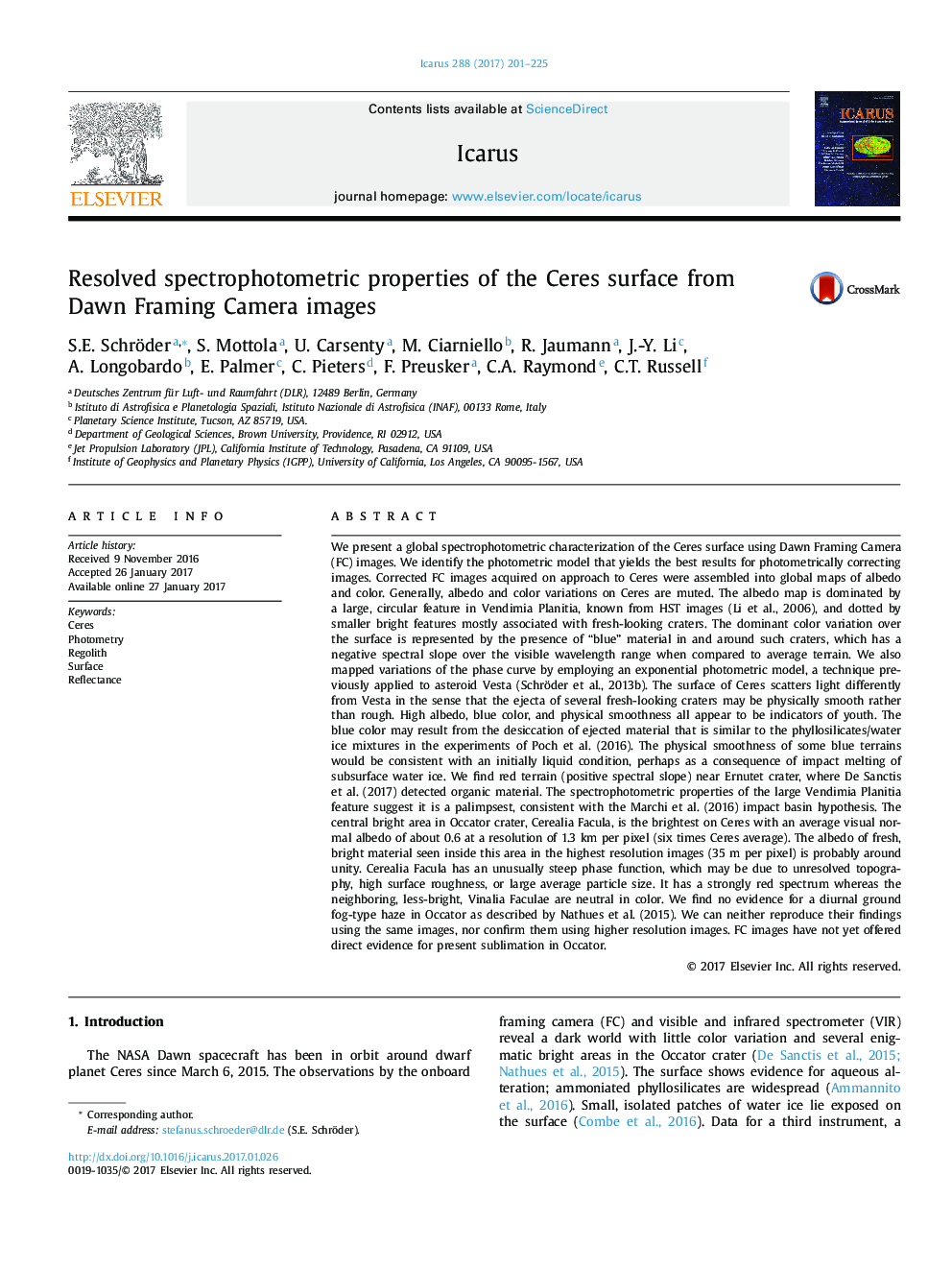| Article ID | Journal | Published Year | Pages | File Type |
|---|---|---|---|---|
| 5487089 | Icarus | 2017 | 25 Pages |
Abstract
We present a global spectrophotometric characterization of the Ceres surface using Dawn Framing Camera (FC) images. We identify the photometric model that yields the best results for photometrically correcting images. Corrected FC images acquired on approach to Ceres were assembled into global maps of albedo and color. Generally, albedo and color variations on Ceres are muted. The albedo map is dominated by a large, circular feature in Vendimia Planitia, known from HST images (Li et al., 2006), and dotted by smaller bright features mostly associated with fresh-looking craters. The dominant color variation over the surface is represented by the presence of “blue” material in and around such craters, which has a negative spectral slope over the visible wavelength range when compared to average terrain. We also mapped variations of the phase curve by employing an exponential photometric model, a technique previously applied to asteroid Vesta (Schröder et al., 2013b). The surface of Ceres scatters light differently from Vesta in the sense that the ejecta of several fresh-looking craters may be physically smooth rather than rough. High albedo, blue color, and physical smoothness all appear to be indicators of youth. The blue color may result from the desiccation of ejected material that is similar to the phyllosilicates/water ice mixtures in the experiments of Poch et al. (2016). The physical smoothness of some blue terrains would be consistent with an initially liquid condition, perhaps as a consequence of impact melting of subsurface water ice. We find red terrain (positive spectral slope) near Ernutet crater, where De Sanctis et al. (2017) detected organic material. The spectrophotometric properties of the large Vendimia Planitia feature suggest it is a palimpsest, consistent with the Marchi et al. (2016) impact basin hypothesis. The central bright area in Occator crater, Cerealia Facula, is the brightest on Ceres with an average visual normal albedo of about 0.6 at a resolution of 1.3 km per pixel (six times Ceres average). The albedo of fresh, bright material seen inside this area in the highest resolution images (35 m per pixel) is probably around unity. Cerealia Facula has an unusually steep phase function, which may be due to unresolved topography, high surface roughness, or large average particle size. It has a strongly red spectrum whereas the neighboring, less-bright, Vinalia Faculae are neutral in color. We find no evidence for a diurnal ground fog-type haze in Occator as described by Nathues et al. (2015). We can neither reproduce their findings using the same images, nor confirm them using higher resolution images. FC images have not yet offered direct evidence for present sublimation in Occator.
Related Topics
Physical Sciences and Engineering
Earth and Planetary Sciences
Space and Planetary Science
Authors
S.E. Schröder, S. Mottola, U. Carsenty, M. Ciarniello, R. Jaumann, J.-Y. Li, A. Longobardo, E. Palmer, C. Pieters, F. Preusker, C.A. Raymond, C.T. Russell,
